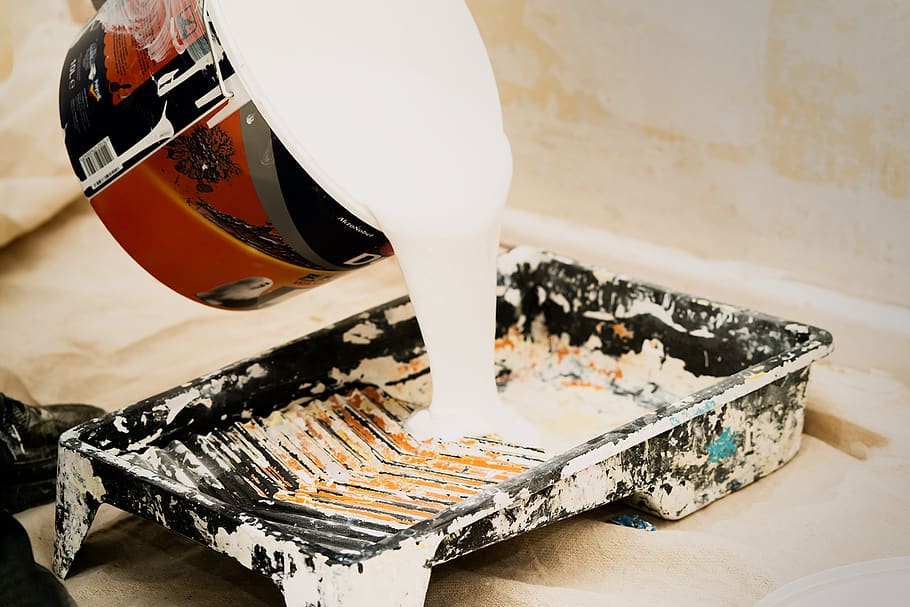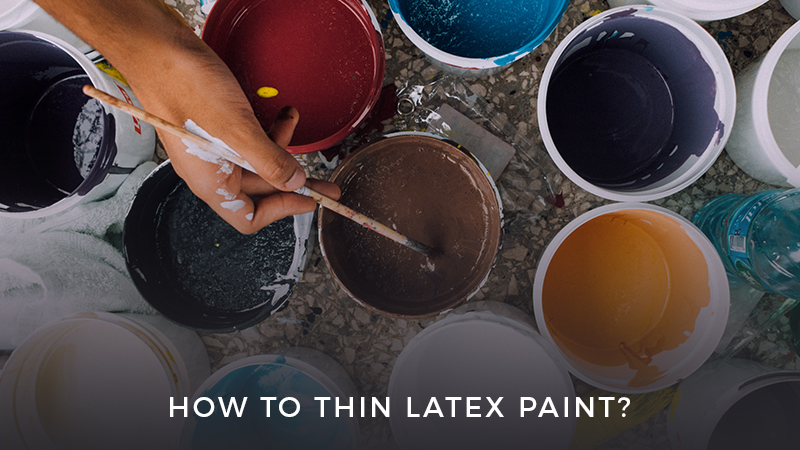Learn How to Thin Latex Paint (in 4 Easy Steps)
Want to learn how to thin latex paint? In this article, we will explain how you can do so step-by-step.
Getting tired of your old, boring interior? Like it or not, a certain feeling of gloominess envelops planned living spaces.
If you feel like your home doesn’t give you the utmost comfort and motivation anymore, applying a fresh coat of paint can help revitalize your living space into a more inspiring environment.
If you’re after long-term flexibility that promises a high-gloss finish to your walls and ceilings, turning to latex paint is the best choice.
Not only is it resistant to cracking and chipping, but its smooth finish also helps make your interior walls easier to clean.
Here, we have prepared a comprehensive guide that will teach you the proper way to thin latex paint and take advantage of its distinct features.
Excited to learn how? Read on…
What Is Latex Paint?
Latex paint, or acrylic paint, refers to the type of water-based paints that are used on wood, metal, and on general painting projects.
Contrary to its name, this type of paint doesn’t contain latex from the rubber plant. Instead, it possesses a series of man-made polymers that act as synthetic latex binders.
Compared to oil-based paints, which are not water-soluble, latex paints can dissolve in water. They also dry more easily and are generally considered safer as they contain fewer harmful chemicals.
Benefits of Using Latex Paint
- Faster drying time
- Resistance to yellowing over time
- Easy to apply
- Contains fewer harmful chemicals
- Easy to clean up
- Flexible
- Resistant to flaking, blistering, and chipping
Why Should You Thin Latex Paint?
Generally, since latex paints are water-based, they are thicker than oil-based paints.
Because of this, the paint must be diluted or thinned with water before application in order to ensure the appropriate level of thickness or viscosity and achieve better consistency.
How to Thin Latex Paint Step-by-Step
Step 1: Check whether the paint needs to be thinned
Of course, not all latex paints need to be diluted. In fact, there are products on the market that are ready for use. To check whether the paint you’ve bought needs to be thinned, the first step you must do is to assess its thickness.
To do this, open the can of latex paint and stir it slowly using a stick.
For a better assessment, try to stir it for about five to ten minutes by moving the stick in circular, upward, and downward spiral motions.
Once you’re done, prepare a plate or a plastic bin beside the can. Withdraw the stick and let the paint drop onto the plate or plastic.
If it drips easily, it means the paint is ready for use. If the paint doesn’t come off easily and drips in clumps, this means you need to thin it to achieve a better consistency.
Step 2: Prepare the bucket
If you think your paint is not ready for use and needs to be thinned first, you can proceed by preparing a can or a bucket to thin the paint in.
Depending on the amount of paint you will use, the size of the bucket may vary. Specifically, if you’re set for a massive project, using a 5-gallon or 19-liter bucket is the safest bet.
On the other hand, if you’re going to use less than 1 gallon (such as 1 pint) of paint, preparing a smaller bucket will do the job.
Step 3: Add the right amount of water
Once you’ve prepared the bucket, pour in the paint and add the right amount of water into it. For a safe start, add a small amount of water first.
Stir for a few minutes and then pour in a bit more water. Repeat the process until you achieve your preferred consistency.
As a general rule of thumb, try following this ratio: for every gallon (3.7 liters) of paint, add 1/2 cup (118 ml) of water.
Don’t mix it all together in one go. Instead, start by adding less water and then increase the amount gradually as needed. Be sure to stir the mixture every time you add more water.
Take note that you should never add over 4 cups of water per 1 gallon of latex paint.
Step 4: Test your paint
Once done, you can test whether the mixture is ready for application. To do so, get a paintbrush and apply the thinned paint to a scrap of wood or cardboard.
Let the first coat dry and then add a second coat. Observe the results.
If the paint drips when applied to the wood or cardboard, this means the mixture is too thin. Meanwhile, if the substance is too cloudy, it means the paint is too thick.
The Bottom Line
Ready to give your house the ultimate makeover? Turn the plain into the spectacular by giving your interior a boost in color.
For better results, be sure to purchase only quality latex paints from reputable stores in your area. I hope you enjoyed our explanation of how to thin latex paint. Cheers!
Read Latest Posts

Hi, I'm Anthony Tran! Welcome to my site. I live in Arizona and am obsessed with all things related to building an Online Business and working from home. Learn about my journey here.
Follow Online




